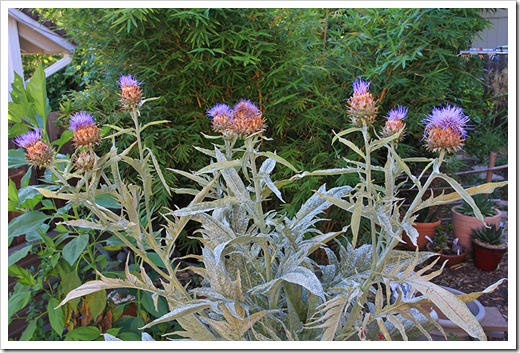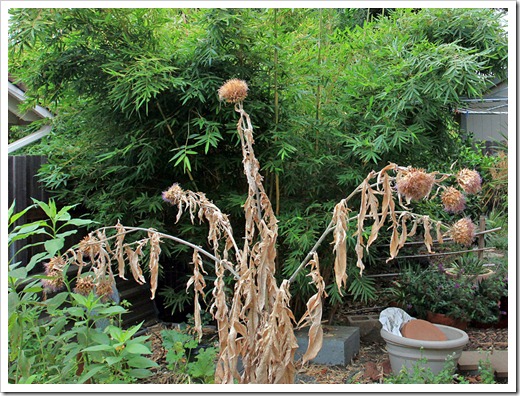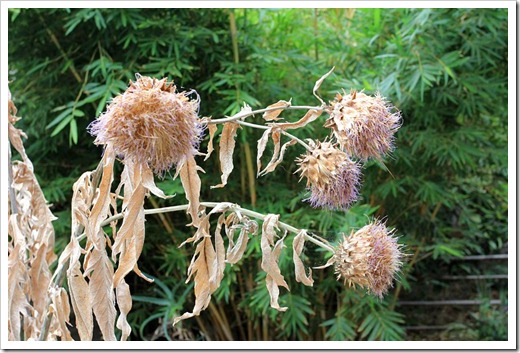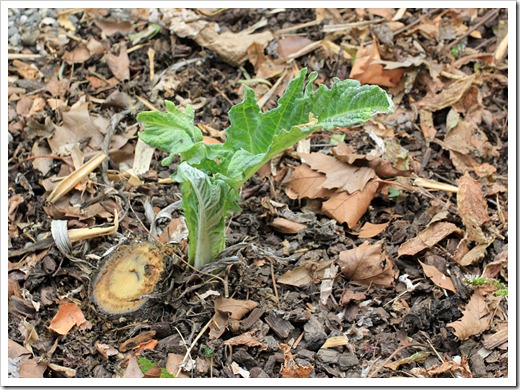Goodbye, cardoon!
Last year a cardoon (Cynara cardunculus) came up in the back yard near the vegetable beds. I still don’t know how it ended up there, but thistle seeds—cardoons and artichokes are in the thistle family—are light and fluffy and can drift on the wind for long distances. It had over a dozen flower heads this summer and was the focal point of that corner of the yard.
Cardoon at its peak this summer
Fast forward a few months, and our cardoon has lost all its former glory. Now it’s nothing but a desiccated skeleton:
Cardoon on September 1, 2012
Just last weekend fellow garden blogger Alan Lorence wrote about cutting down his cardoon and finding new growth at the base of the stalk. I was curious to see what might be waiting under the tangle of dried leaves that covered the base of our plant. Out came my trusty 6” pruning saw and after I’d cleared away the old plant material I also found new basal growth.
New basal growth
Yeah! This means that we’ll have another cardoon next summer.






No fair -- you're supposed to wait until the seeds start scattering everywhere before you cut the thing down! I like to let my plants scare me into activity, rather than being proactive. :-)
ReplyDeleteThat bamboo backdrop is wonderful!
It was your post that prompted me to take action. Otherwise my cardoon would still be there, happily making seeds :-).
DeleteLove cardoons, so architectural. And they're resilient plants too and usually gets going early on in the spring :)
ReplyDeleteMaybe way more than just one.
ReplyDelete